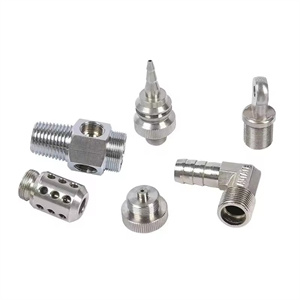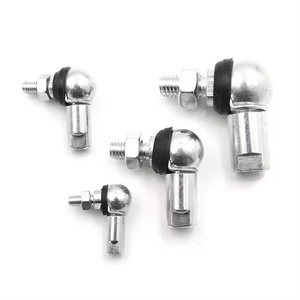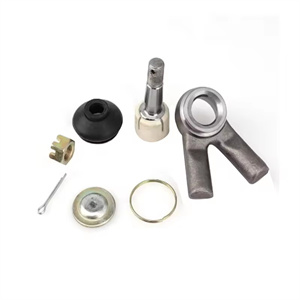
Ball joints have the following characteristics:
Multi directional mobility: Ball and socket joints allow connectors to move freely in multiple directions, as their design allows one spherical part to rotate freely within another spherical or hemispherical part. This makes them very suitable for applications that require multi-directional flexibility.
Strong load-bearing capacity: The ball joint can withstand forces and moments from multiple directions, as the spherical part can evenly distribute loads within the ball joint. This design allows the ball joint to maintain stable performance even under heavy loads.
Compact design: Compared to other types of joints, ball and socket joints usually have a more compact design, which makes them particularly useful in space limited applications.
The use of CNC machining lathes (also known as CNC lathes or CNC turning centers) to produce ball joints is an efficient and accurate manufacturing method. CNC lathes automatically perform various turning operations through computer control, thereby producing Ball Joints that meet design requirements. The following are the general steps for producing Ball Joints using a CNC lathe:
Design and Programming: Firstly, designers will use CAD (Computer Aided Design) software to create a 3D model of ball joints. Then, this model will be converted into code that CAM (Computer Aided Manufacturing) software can understand, usually G code or M code, which contains all the instructions and parameters that the machine tool needs to execute during the machining process.
Material preparation: Select suitable materials based on the design. For Ball Joints, factors such as wear resistance, strength, and toughness may need to be considered.
Machine tool setting: Install and fix the workpiece on the CNC lathe. Meanwhile, select the appropriate cutting tool and install it on the machine tool.
Processing operation: Input the programmed G code into the control system of the machine tool, and start the machine tool for processing. The machine tool will automatically rotate the cutting tool according to the instructions in G code to remove excess material from the workpiece, thereby creating the shape of ball joints.
Processing inspection: After the processing is completed, perform quality inspection on Ball Joints. This may include size measurement, surface smoothness inspection, material hardness testing, etc. If non-conforming products are found, they may need to be repaired or reprocessed.
The advantages of CNC turning to produce Ball Joints include high precision, high efficiency, and high degree of automation. However, since CNC turning is mainly suitable for machining cylindrical workpieces, if the shape of ball joints are complex, it may be necessary to combine other CNC machining methods, such as CNC milling, etc


